Setting the course for change
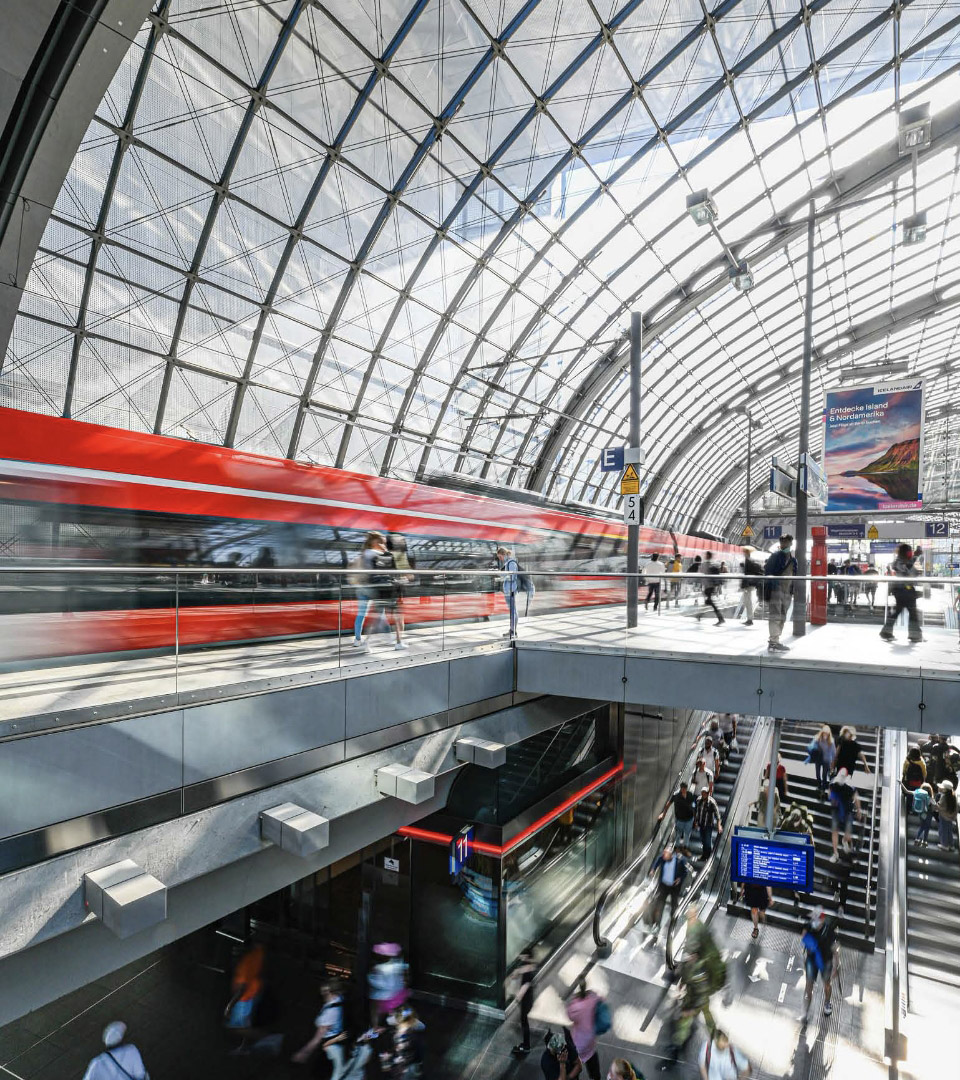
Growth
After Covid-19, rail is back on track for growth
The turnaround saw a shift from almost empty trains during the height of the Covid-19 pandemic to new demand records, particularly in long-distance passenger transport.
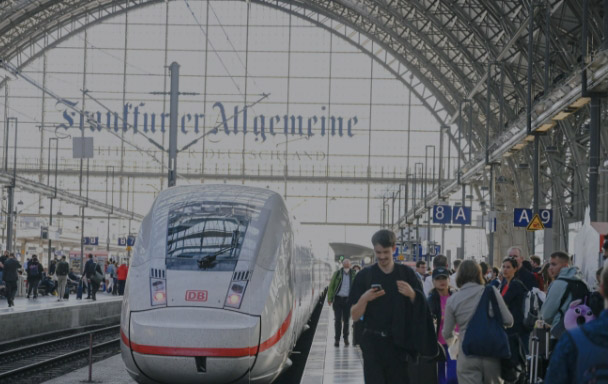
The rapid return of customers shows that it was right to maintain our course even in difficult times and to set ourselves up for further growth with new trains, better offers and more personnel. We have already made great strides towards meeting the boom in demand. Our capital expenditures in the ICE fleet are a key component: by the end of 2026, the long-distance transport fleet will expand to over 430 ICE trains. In late-2022, the first four ICE 3neo trains were put into operation as planned. By late-2029, we will have put a total of 73 ICE 3neo trains into service. In addition, 22 further ICE 4 trains were added in 2022. This makes the ICE 4 the largest ICE series in long-distance transport.
Number of passengers travelling with
DB Long-Distance compared to 2021
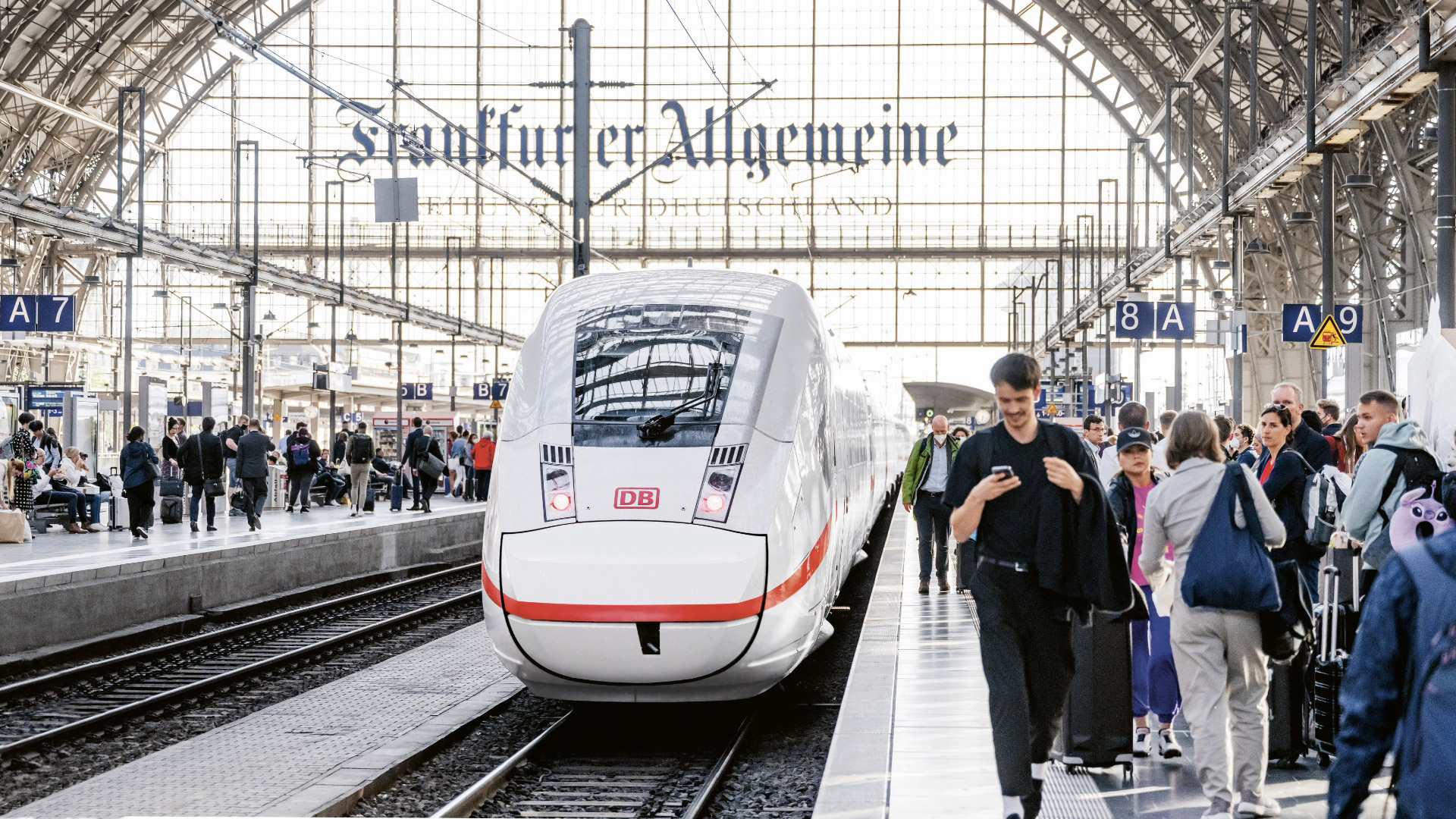
Germany-Ticket
The new Germany-Ticket makes mobility simple
The 9-Euro-Ticket was not only highly successful, but also contributed to climate protection. Around 1.8 million tons of CO₂ were saved during the three-month period in which the ticket was offered.
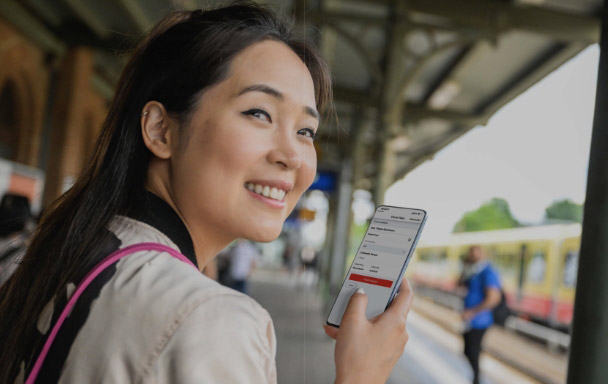
The Germany -Ticket simplifies local transport fares for regional transport, as it makes it possible to travel across state boundaries and different tariff zones with only one ticket throughout Germany. It is therefore a strong argument to switch to climate-friendly rail. The Germany-Ticket follows the 9-Euro-Ticket from the summer months of 2022. The 9-Euro-Ticket was introduced at the initiative of the Federal Government to take the burden off citizens due to sharply increased costs for electricity, food, heating and mobility. In light of the great success of the 9-Euro - Ticket, the Germany - Ticket will be introduced as a permanent season ticket offer in cooperation with the Federal Government and the Federal states.
euros per month is the price of the
new Germany-Ticket for all local
transport in Germany
million 9-Euro-Tickets sold
from June to August 2022
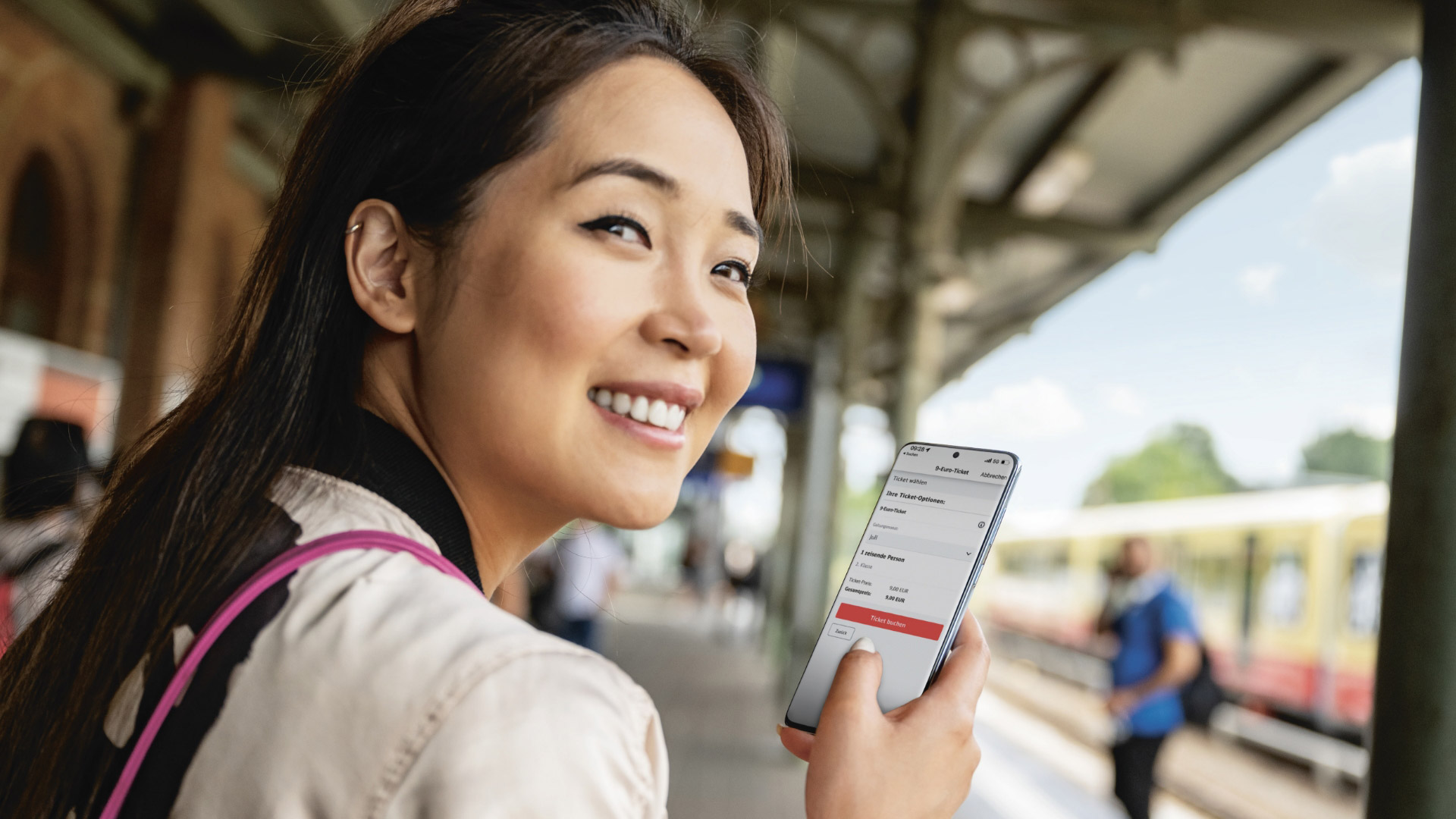
Infrastructure
The high-performance network will lay the foundations for a high-performance infrastructure
The highly utilized network currently covers around 3,500 track kilometers, ato improve infrastructure quality is the general renovation of highly utilized corridors and the management of the infrastructure from a single source.

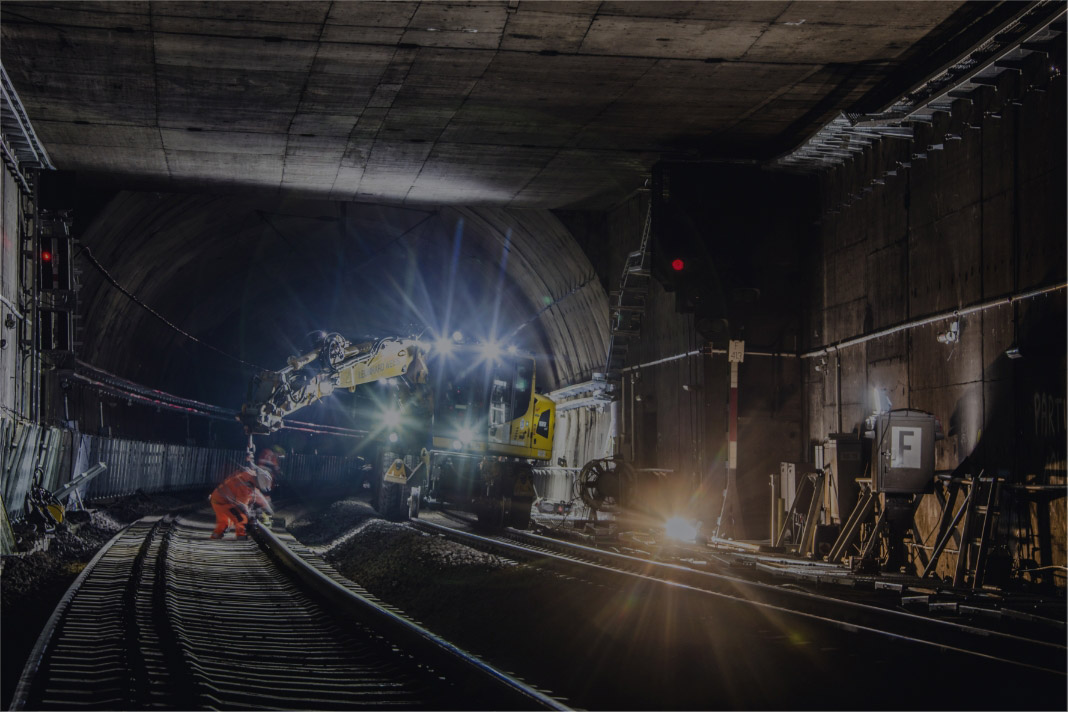
Core elements
of the general renovation
Bundling
Construction work will be
bundled and will be tailored
towards an increase in capacity.
Increase in performance
Comprehensive modernization
is being sought rather than just
like-for-like replacements.
Customer-friendly construction
The construction process itself is customer-
centered (e.g. through the previous
modernization of diversion routes).
The approach for the large-scale modernisation of the network differs from previous practice in three respects: The measures are bundled together and consistently oriented towards increasing capacity. Modernization rather than just like-for-like replacements. The aim is also to minimize the impact of the construction measures on customers.

Highly utilized
network grows to
over 9,000 km
The approach for the large-scale modernisation of the network differs from previous practice in three respects: The measures are bundled together and consistently oriented towards increasing capacity. Modernization rather than just like-for-like replacements. The aim is also to minimize the impact of the construction measures on customers.

Highly utilized
network grows to
over 9,000 km
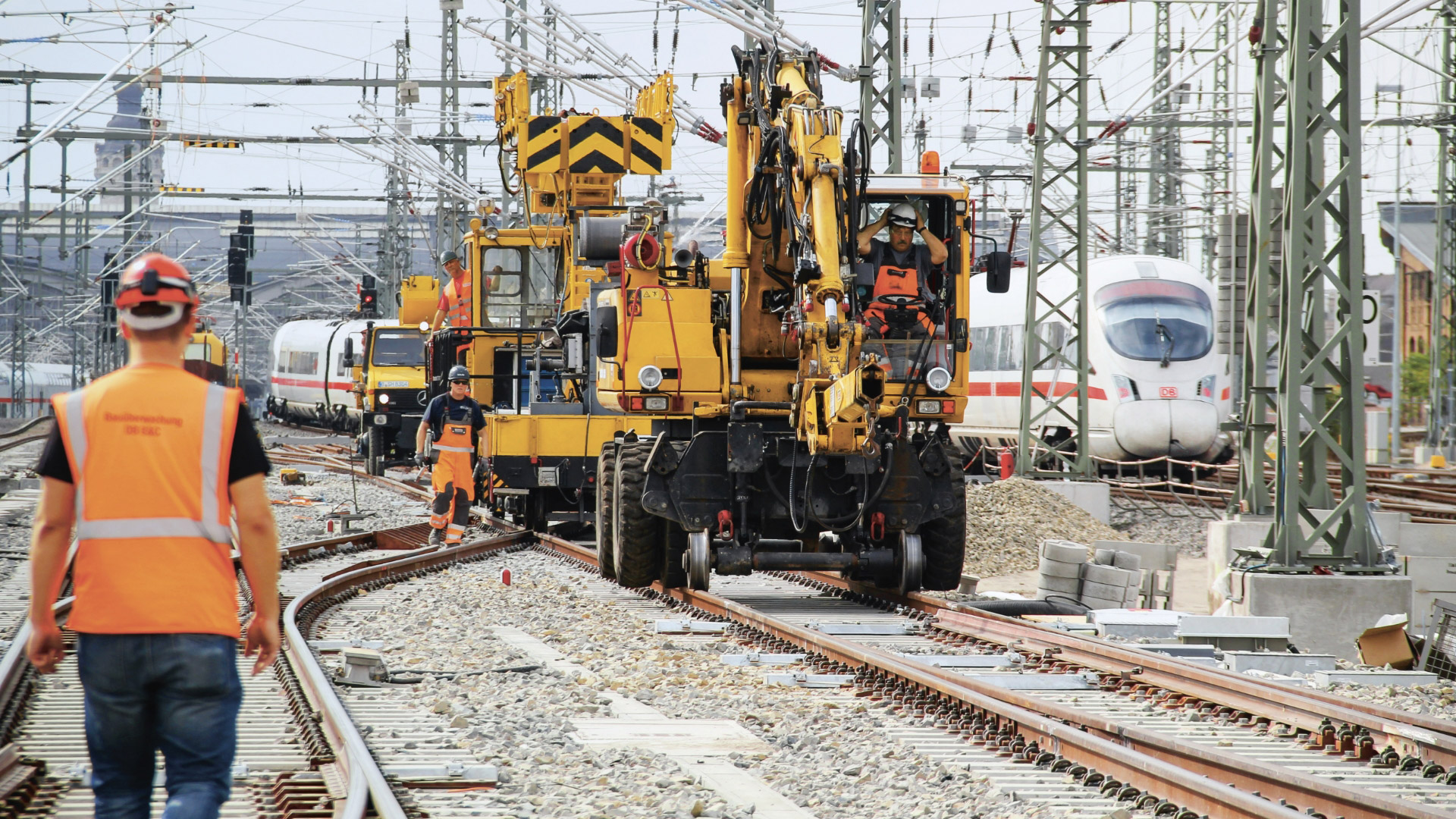
Network expansion
Systematic network expansion creates more attractive and faster connections
New infrastructure and state-of-the-art technology provide improved capacity, reliability and quality, reduce travel times in long-distance transport and create more attractive urban connections in the south and south-west. The Wendlingen—Ulm new line is the first step towards significantly faster connections. When Stuttgart 21 goes into operation, the new line can fully realize its potential: the journey time between Stuttgart and Ulm in long-distance transport will then be almost halved to around half an hour.

Wendlingen—Ulm new line
The new infrastructure creates the basis for more attractive rail transport: in long-distance transport, travel time between Stuttgart and Ulm will be reduced by around a quarter of an hour. At the same time, the daily service between Stuttgart and Munich will increase by around 20 to 90 journeys. Thanks to the high-speed route, there are many new, attractive regional transport services: the new station in Merklingen will open up a whole region for rail transport.


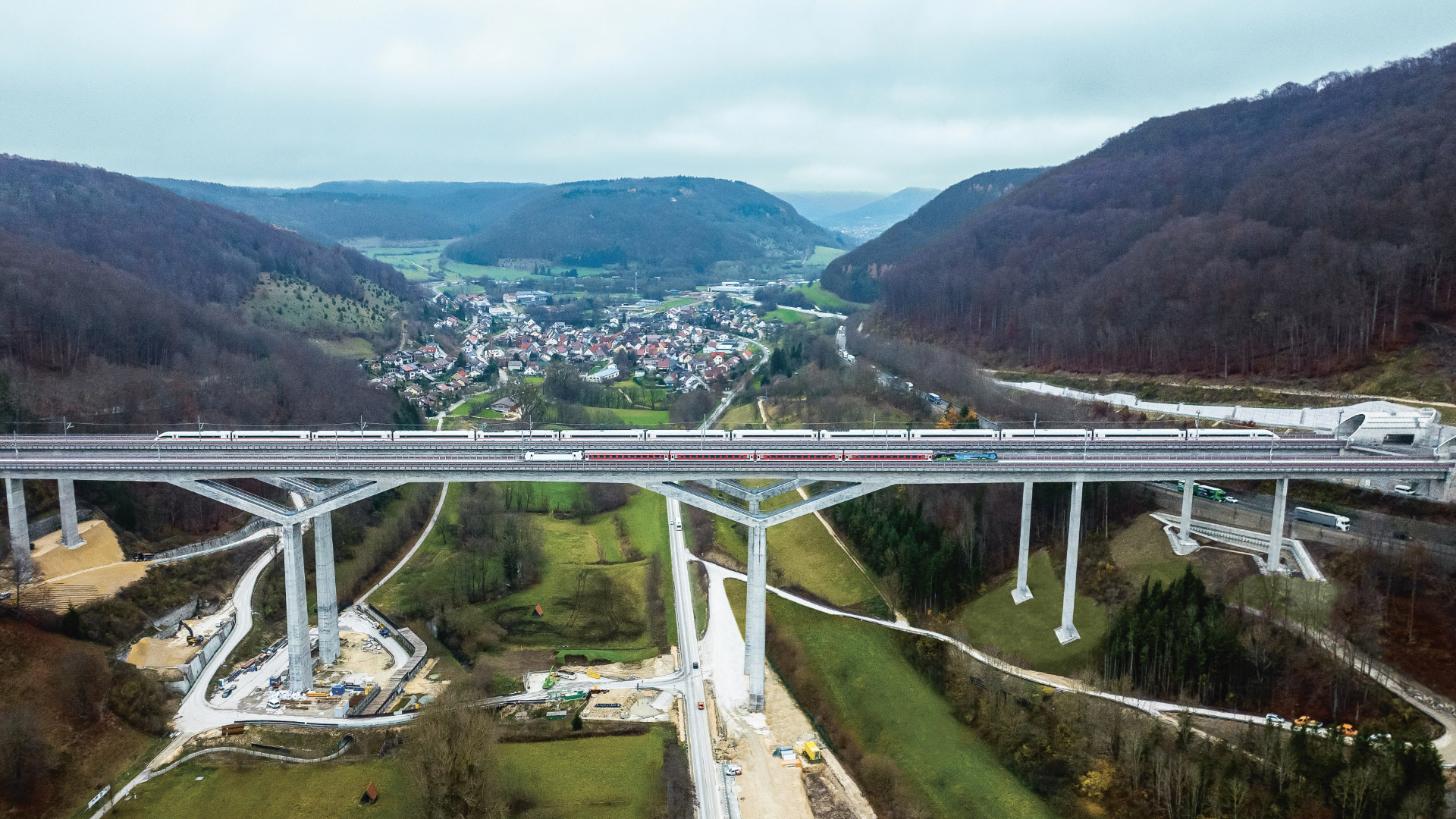
Freight transport
We are transporting more freight by rail
The transport sector is one of the main sources of greenhouse gas emissions in Germany. In order to protect the environment, a shift towards climate-friendly rail is therefore necessary: freight belongs on the rails! The share of rail in freight transport is to be increased to 25% in Germany in the future. This will save the need for 30 million truck journeys. By strengthening rail transport, a reduction of more than 10 million tons of CO₂ per year can be achieved.
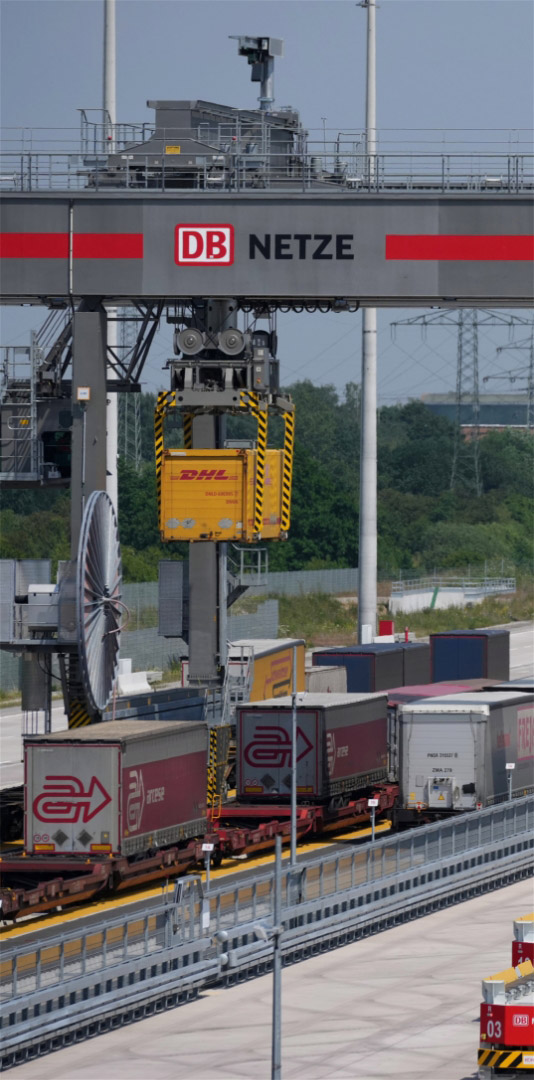
Rail freight transport is the most climate-friendly means of transport. Every ton transported by rail saves our environment 80 to 100% CO₂. DB Cargo therefore offers the switch to 100% eco-power on electrified lines. DB Cargo operates 94% of its rail transport in Germany electrically powered. Where the use of diesel is still required, the climate-friendly biofuel HVO (hydrotreated vegetable oil) can be used instead of fossil diesel. A single freight train can replace up to 52 trucks. DB Cargo offers complete logistics chains that have intelligent and intermodal networks. As the largest rail service provider, DB Cargo is consistently attuned to the digitalization and automation of all processes and to digital technology solutions such as digital automatic coupling, which is an integral part of the digitalization of freight cars.
trains
waterways
trains
waterways
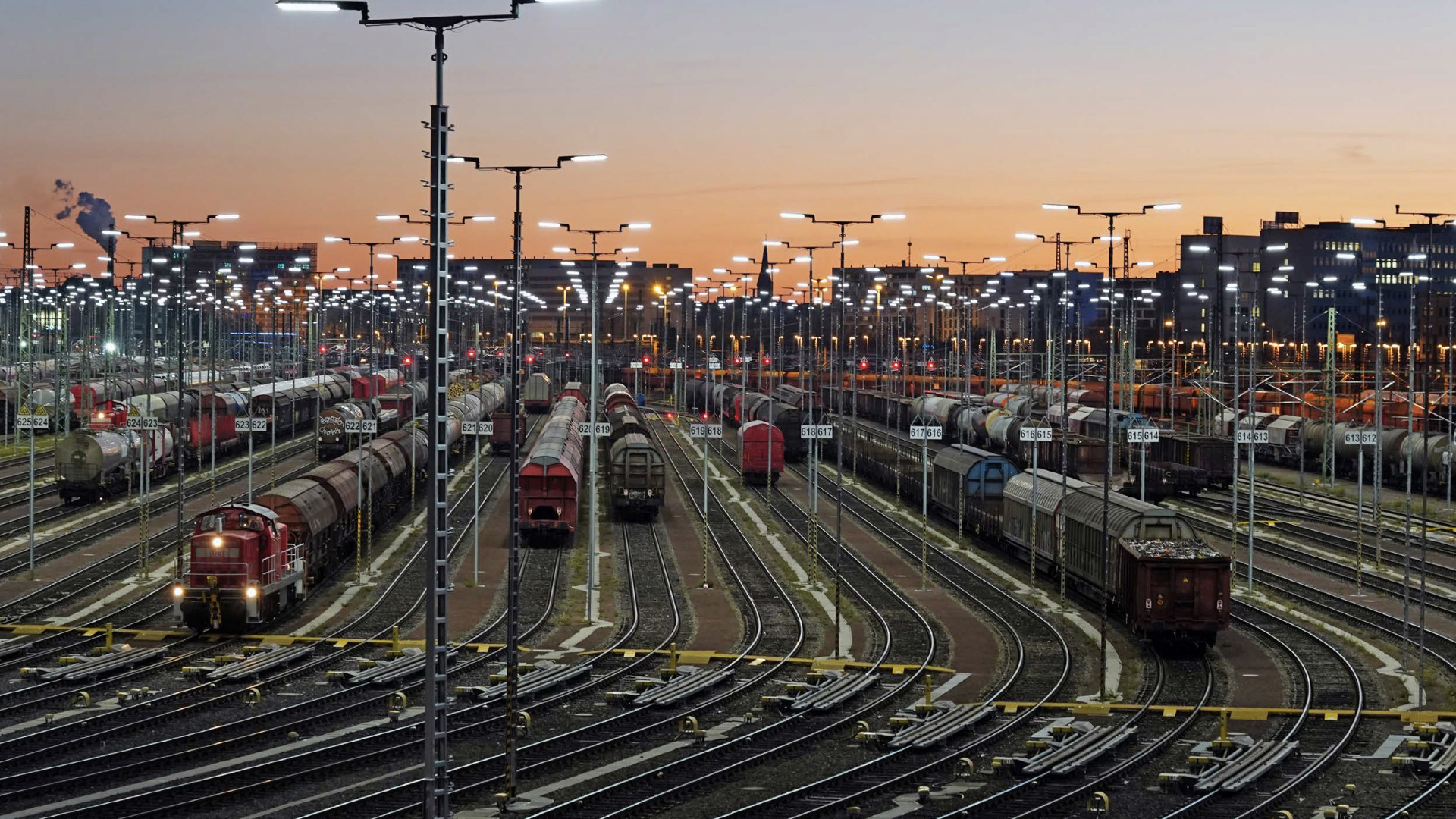
Climate protection
Mobility transition for more Climate protection
No other motorized transport today is as climate-friendly and efficient in terms of its use of space as the rail system. A strong rail system is therefore an essential prerequisite for meeting the climate protection targets of the Federal Government and the EU, because the necessary reduction in emissions in the transport sector cannot be achieved without a massive shift in the mode of transport towards the climate-friendly rail system.
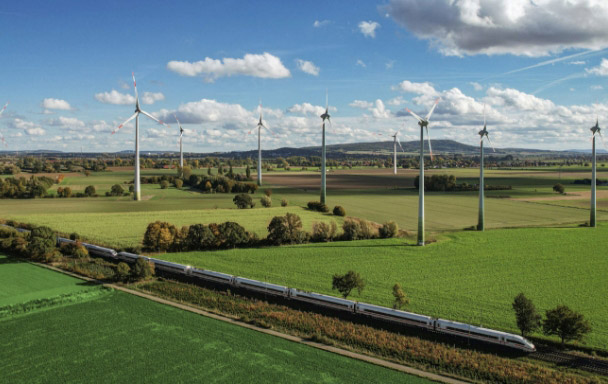
With the Strong Rail strategy, we expressly acknowledge our social responsibility and define our concrete contribution to achieving the Federal Government’s central transport and climate policy objectives. No motorized means of transport is as climate-friendly today as rail, and no mass transport can achieve a 100% share of renewable energy as quickly. By 2038, we will be completely switching to eco-power in the DB traction current mix. With the Strong Rail strategy, we have set the course for a shift in the mode of transport. It forms a framework for both creating the conditions for a shift in the mode of transport and ensuring a sustainable orientation with our Green Transformation. With a long-term focus on growth and technological innovations, we are creating the necessary capacities in infrastructure, vehicles and personnel.
in the DB traction
current mix in
Germany in 2022

Climate-neutral
We aim to be climate-neutral by 2040
As DB Group, we will be climate-neutral by 2040. We are using several levers to achieve this objective: the continued commitment to the electrification of lines, the expansion of the proportion of eco-power, the start of the heat transition and the shift away from diesel. In doing so, we pursue a technology-oriented approach and expand the use of alternative drives and fuels. We rely on alternative fuels such as HVO (hydrotreated vegetable oil) produced from biological residues and waste, as well as battery-powered trains and hydrogen drives.
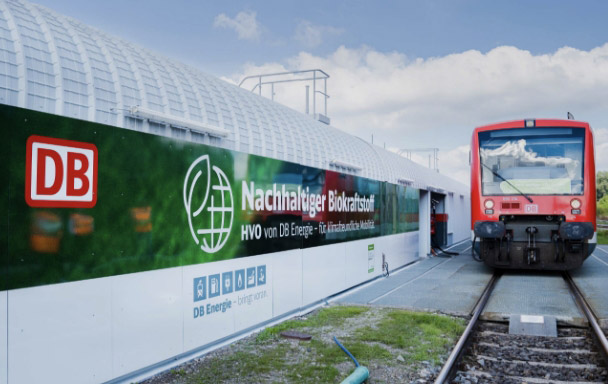
More than 90% of our rail transport in Germany today is already electric. In our diesel vehicles , we rely primarily on alternative fuels such as biofuel HVO (hydrotreated vegetable oil). Diesel vehicles can be operated with HVO without the need for technical refitting. In addition, as part of the H2goesRail joint funding project, we are working with Siemens on an innovative holistic hydrogen system consisting of a fueling, train and maintenance infrastructure in order to promote the use of hydrogen on rails. Together with the Australian energy group Fortescue Future Industries (FFI), we are working on a new drive technology, the ammonia hydrogen engine. Diesel engines are modified so that they can be operated with zero emissions using green ammonia and green hydrogen, produced using renewable energies. In addition, in 2022, DB Regional worked with Alstom to test the first battery-powered train in passenger operations.
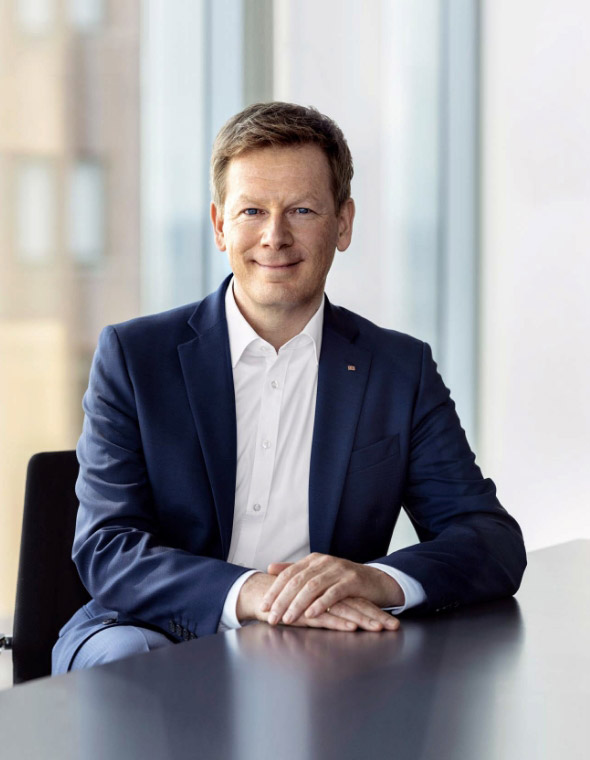

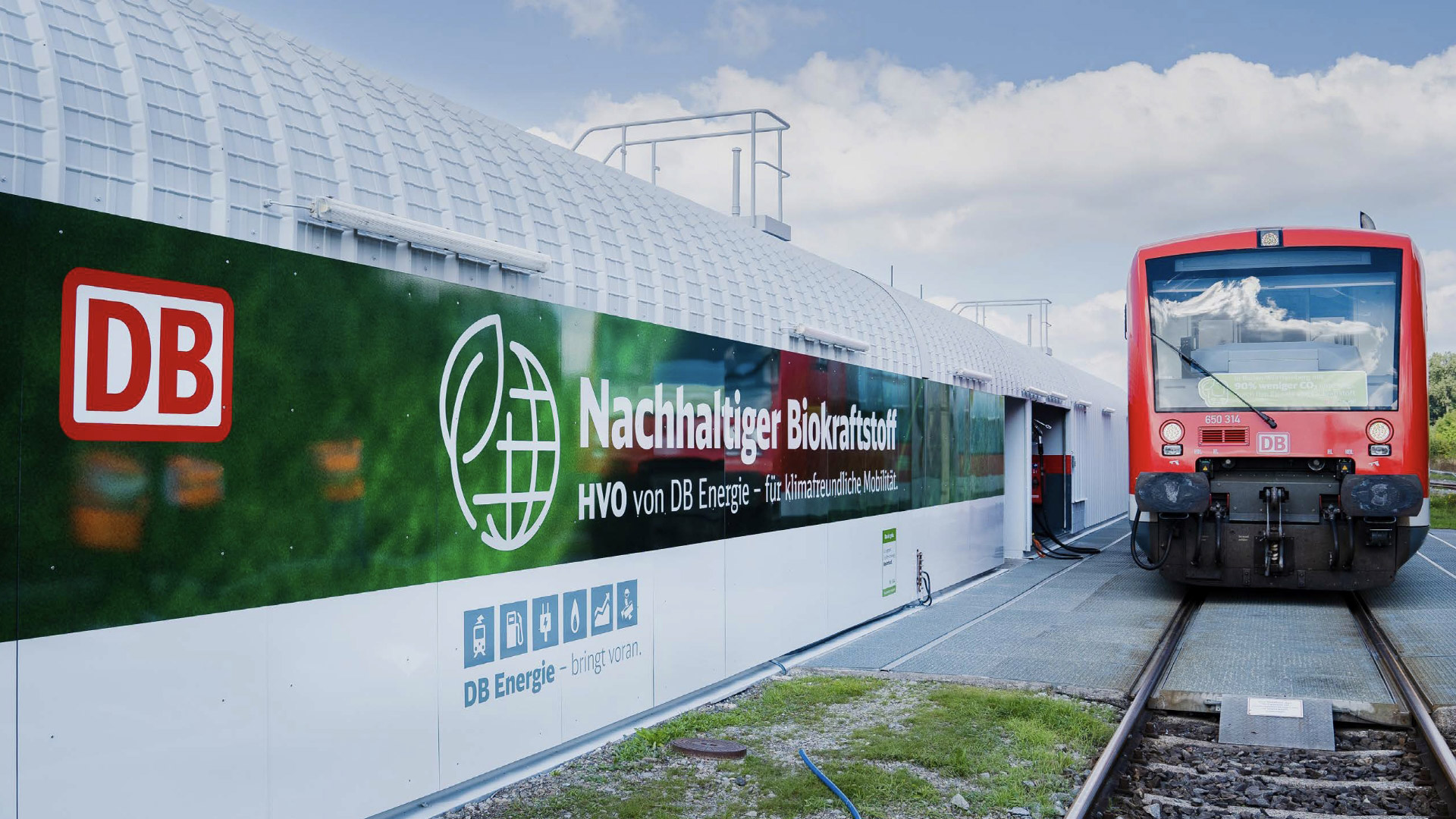
Team DB
Team DB has an important role to play
In recent years, DB Group has hired a large number of new employees in Germany. Even during the Covid-19 pandemic, when many other companies were cutting jobs, we recruited heavily to strengthen the climate-friendly rail system. That paid off.


28,000
hiring commitments in Germany in 2022
As an attractive employer, DBGroup impresses in a competitive labor market.
In 2022, we were able to make almost 28,000 hiring commitments in Germany. Many new drivers, traffic controllers, IT experts and engineers are now working in Team DB to make our operations more robust, reliable and digital. In order to be an attractive employer for our employees, we are constantly developing our employment conditions. Diversity is of particular importance to us. Strong diversity promotes our ability to innovate, strengthens talent acquisition and loyalty, and brings us closer to our customers – we are convinced of that. We are therefore particularly proud to have received the European Women in Rail Award as the best employer for women in the European rail sector.
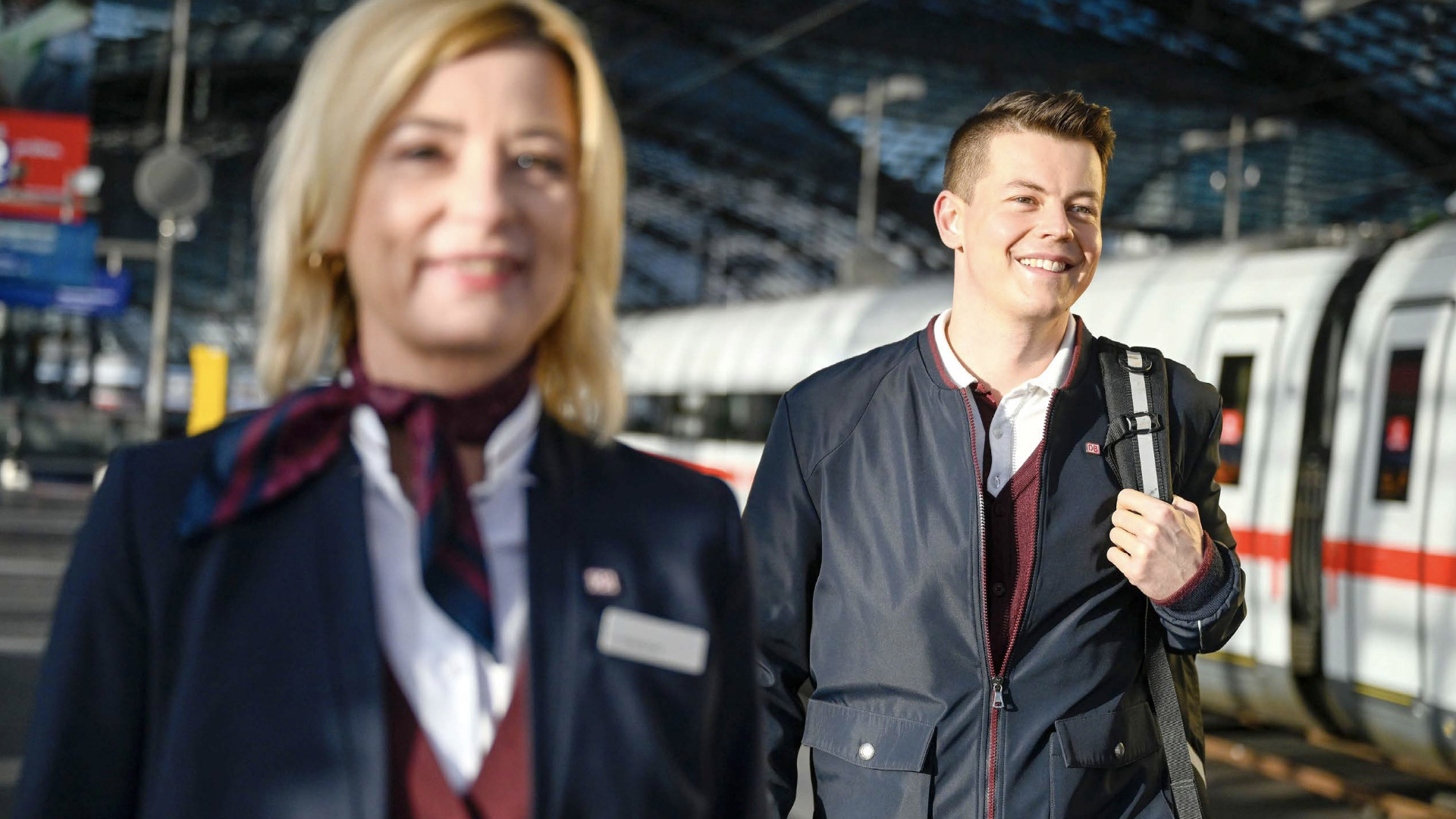
Digitalization
Digitalization makes rail more competitive
New technologies such as artificial intelligence (AI) are already supporting the dispatchers of the Stuttgart, Frankfurt am Main and Munich S-Bahn (metro) companies in the early detection and resolution of faults, thus increasing punctuality. For maintenance, we use AI to visually detect vehicle damage and automatically recognize materials, thus reducing vehicle downtimes, among other things. High-performance connectivity is also key to a modern travel experience and digital rail operations. Significant successes have already been achieved in this area. These include, for example, cooperation agreements with Deutsche Telekom and Vodafone for an uninterrupted wireless network, as well as the use of mobile radio-transparent windows, through which the mobile radio signals reach the travelers about 100 times better as a result of lasering the heat-insulating metal layer. In concrete terms, this means: the mobile phone coverage for passengers will be significantly improved over the next three years.

The aim is to create an intelligent mobility network for a digital, modern and climate-friendly railway for our customers. With initiatives such as the digital production system, we are driving the digitalization of the railway together and are joining forces in the use of new technologies for a sustainable increase in capacity, quality and efficiency.
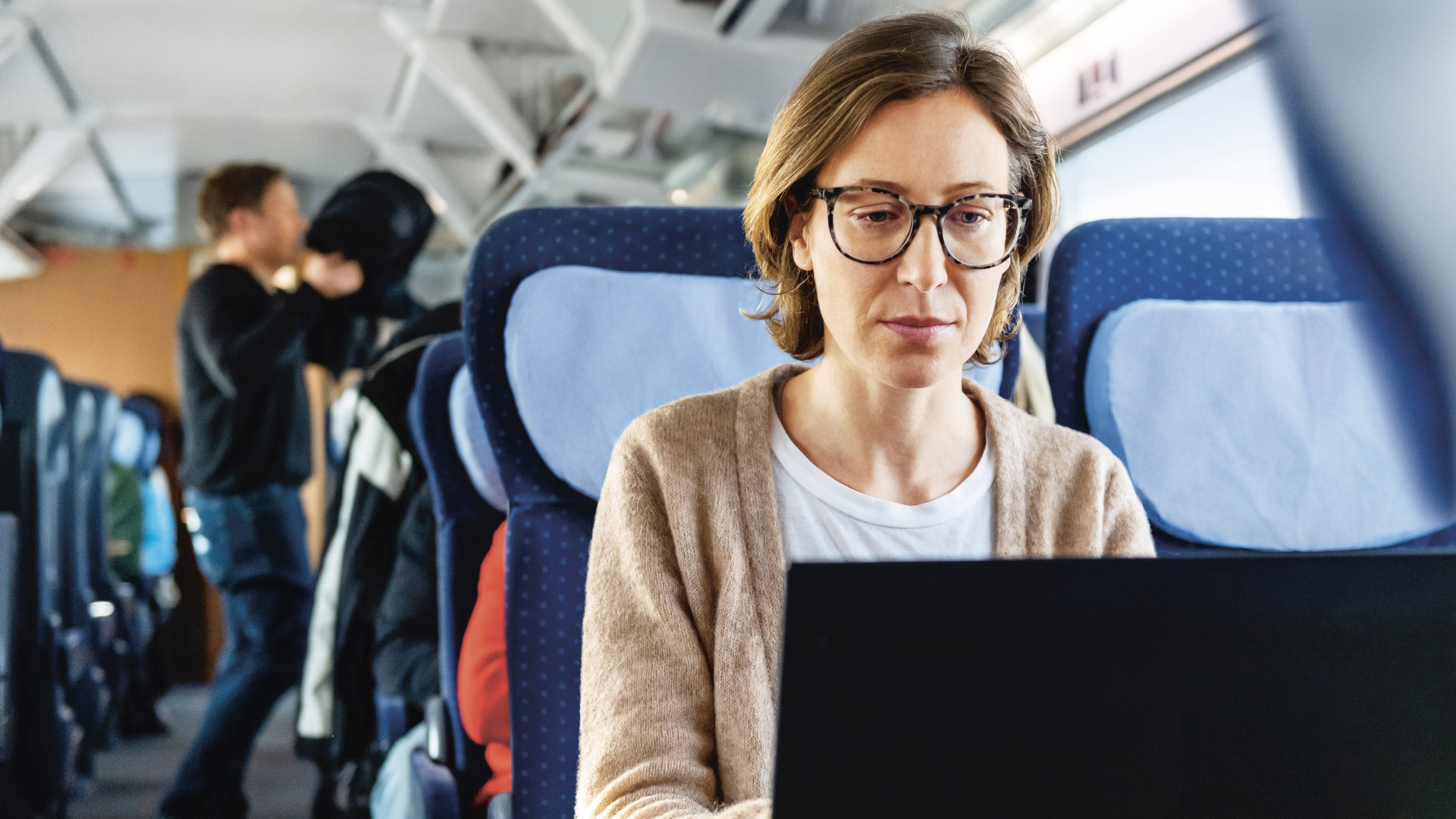
Strong Rail
For a Strong Rail
system
Our targets:
260 million passengers at DB Long-Distance (+100% compared with 2015).
+1 billion passengers in local transport (compared with 2015), of which 0.7 billion in DB Regional Rail and 0.3 billion in the area of New Mobility.
+70% volume sold in rail freight transport in Germany (compared with 2015).
+>30% train kilometers (compared with 2015) and expansion of stations into hubs of modern mobility.


